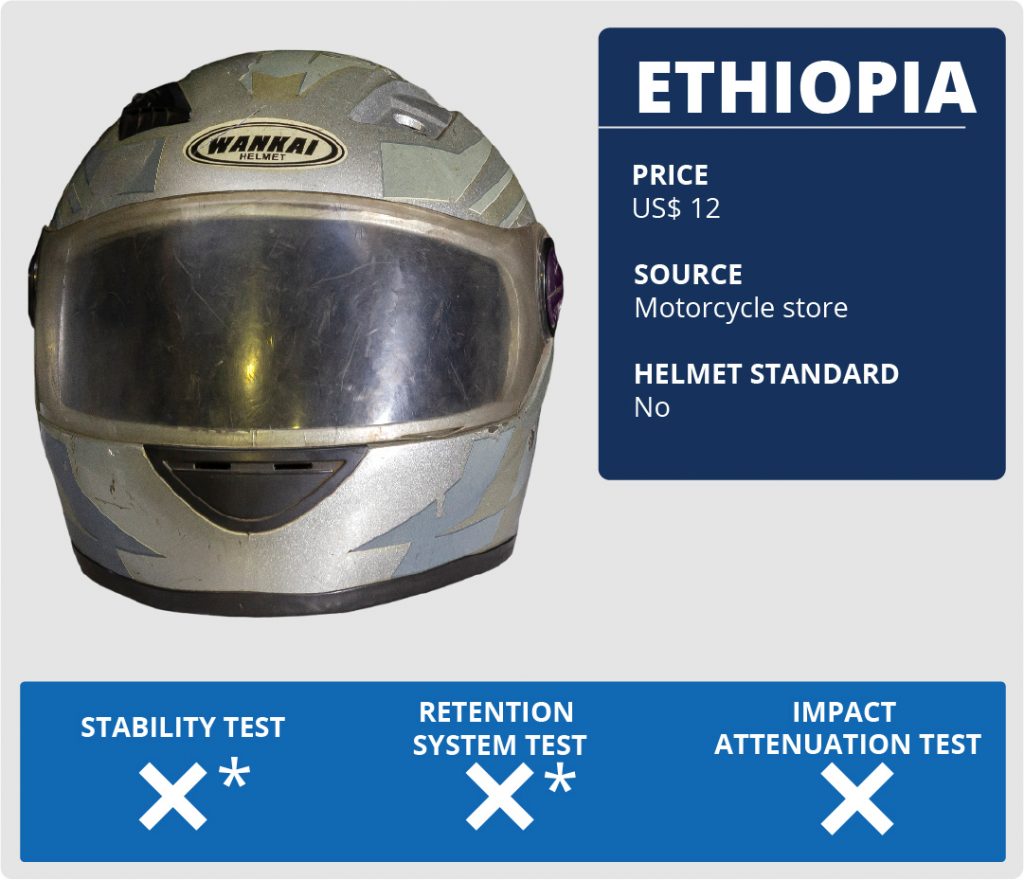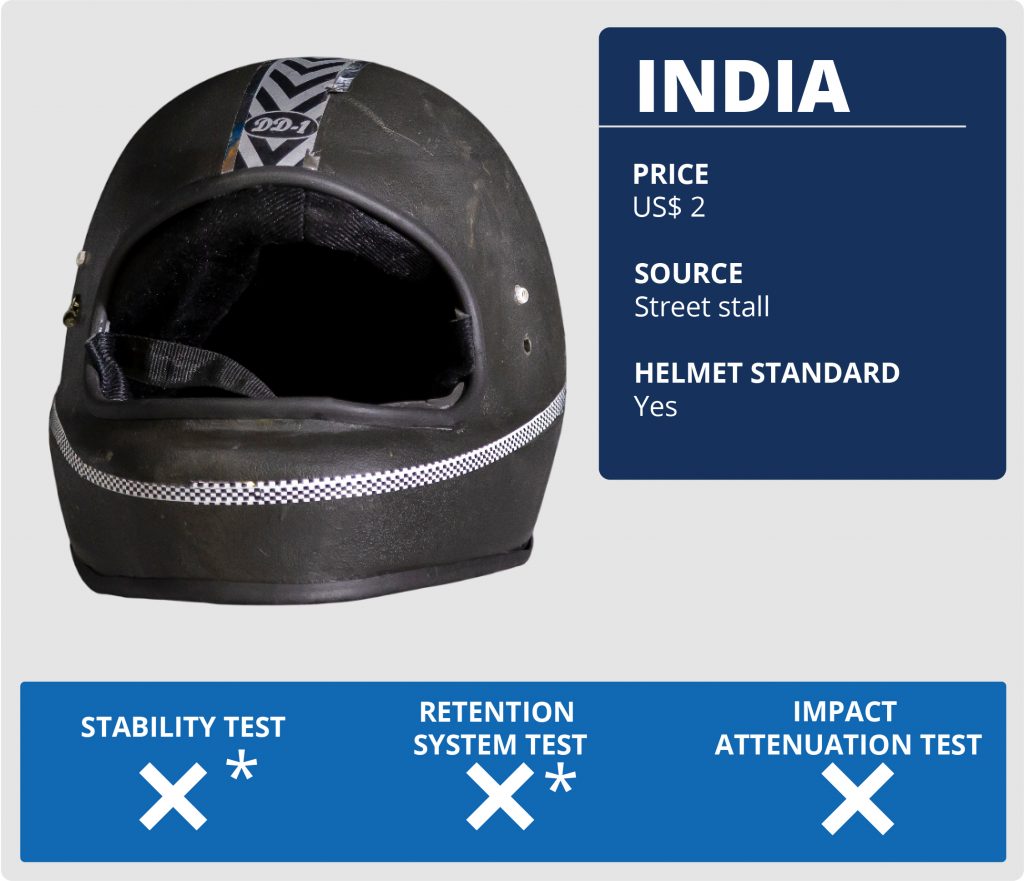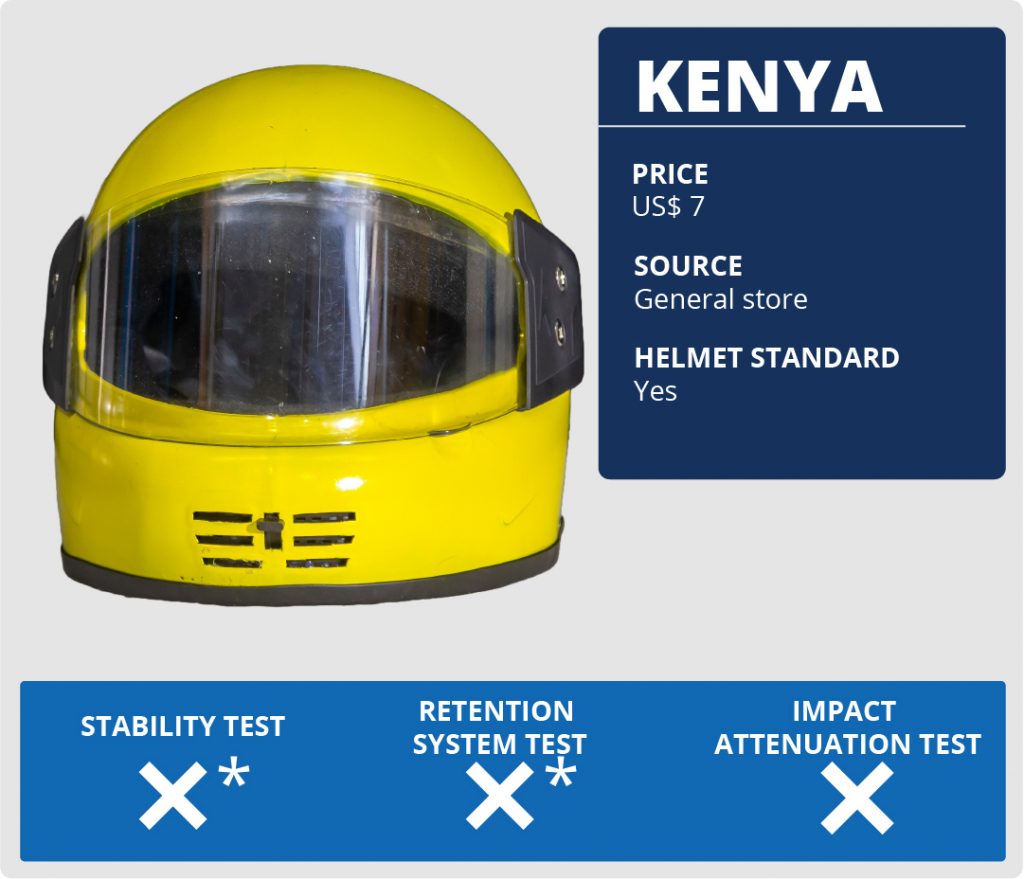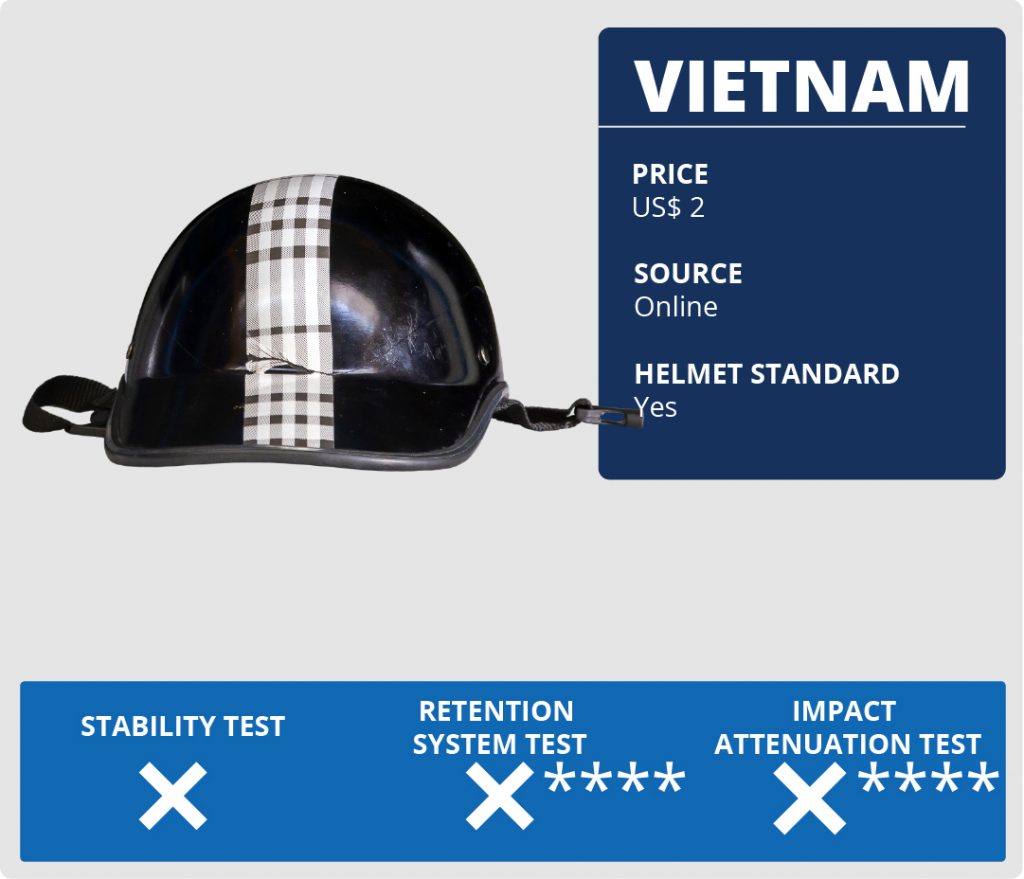People rely on certification labels and brands, but not all are trustworthy.
Eleven helmets were bought from local shops or given by riders to NGO members of the Alliance in Benin, Cote d’Ivoire, Ethiopia, Ghana, Greece, India, Kenya, Mexico, Nigeria, and Vietnam. They are typical of helmets commonly worn in those countries. These helmets were taken to an accredited laboratory for testing, with funding from FIA Foundation and technical expertise from Galeatus LLC. None of the 11 passed all three basic tests, and only one passed one of the tests.
The helmets were evaluated in the laboratory against three core tests that are common to many helmet standards, including UN Regulation No.22 (ECE 22.06). They are indicative of whether the helmets will protect a rider in a crash.
A hook and strap are attached to the back of the helmet on a test headform. Then, a 10kg mass is released from 50cm.
The test is used to check whether the helmet stays on the head as it whips forward (first impact) and the rider falls onto the ground (second impact) in a crash.
Depending upon the standard, the helmet must either remain on the headform or must not rotate more than 30 degrees.
The helmet is attached to a test headform, and the buckle is fastened beneath the chin. A 10kg weight is then dropped from 75cm. The strength and elongation (how much it stretches) of the retention system (the strap and buckle that keep the helmet on the head) are measured.
Dynamic displacement (measuring the maximum amount the retention system stretches when the weight is dropped) must not exceed 35mm. Residual displacement (measuring the recovery position of the retention system two minutes after rebounds and settles back into place) must not exceed 25mm.
The helmet is secured to a test headform and dropped onto a flat metal anvil at a target velocity of 7.5 m/s. This simulates the velocity of a rider hitting the ground in a crash. A three-dimensional accelerometer (a triaxial accelerometer) inside the test headform measures how much of the force of the crash is absorbed by the helmet, thus preventing those forces from being applied to the skull and brain.
As a rider’s head reaches the ground, it will keep moving in the direction of the fall. The helmet’s inside liner is meant to help slow the head down, absorbing the force of the impact.
Peak g—a metric of acceleration experienced by the head as a rider falls to the ground in a crash—cannot exceed 275g.
Head Injury Criterion (HIC)—a metric combining the amplitude and duration of acceleration to estimate potential brain injury—cannot exceed 2,400.

Watch the Stability Test / Retention System Test / Impact Attenuation Test

Watch the Stability Test / Retention System Test / Impact Attenuation Test

Watch the Stability Test / Retention System Test / Impact Attenuation Test

Watch the Stability Test / Retention System Test / Impact Attenuation Test

Watch the Stability Test / Retention System Test / Impact Attenuation Test

Watch the Stability Test / Retention System Test / Impact Attenuation Test

Watch the Stability Test / Retention System Test / Impact Attenuation Test
* test could not be performed due to damage or missing components prior to testing
** test could not be performed due to damage during previous test
*** test could not be performed because it would not stay on the headform
**** test could not be performed due to risk of damage to equipment
With the support of
